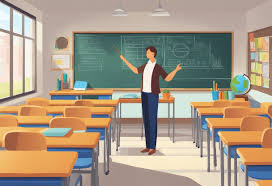The intersection of education and entertainment has created fertile ground for innovative teaching methods. The contemporary teacher increasingly recognizes that kids animated shows offer much more than simple amusement—they provide sophisticated vehicles for delivering educational content through engaging narratives and memorable characters. This strategic integration of animated content into classroom practice represents a significant evolution in educational methodology.
Cognitive science research supports this approach, revealing that information delivered with positive emotional associations—particularly humor and joy—creates stronger neural connections than content presented without emotional engagement. The laughter and delight children experience while watching animated programming actually primes their brains for more effective learning, creating ideal conditions for knowledge acquisition and retention.
Memory formation receives significant enhancement through the narrative structures common in animated programming. When educational concepts embed within story arcs featuring beloved characters, children develop multiple retrieval pathways to that information. These narrative connections create context-rich memory structures that improve both recall and application of knowledge across different situations.
Attention span development, a growing concern in digital education environments, finds support in thoughtfully selected animated content. Quality educational animation maintains engagement through carefully paced storytelling, visual stimulation, and emotional resonance—all without the rapid-fire editing and excessive stimulation common in some commercial media. This balanced approach helps children develop appropriate attention regulation skills applicable to other learning contexts.
Language acquisition benefits tremendously from the rich vocabulary and varied speech patterns present in well-crafted animated programming. Research indicates that children exposed to diverse language through quality media develop more extensive vocabularies and stronger syntactic understanding than those with more limited language input. Teachers who reference and build upon this language exposure extend these linguistic benefits.
Critical thinking skills develop naturally through guided discussion of animated narratives. When educators ask thought-provoking questions about character motivations, story problems, and possible alternative solutions, they help children practice analytical thinking in contexts that feel accessible and enjoyable rather than academically threatening. This low-stakes critical analysis builds confidence that transfers to more formal academic tasks.
Scientific curiosity finds natural stimulation through animated content that presents the wonders of the natural world through character-driven exploration. Programs featuring scientific themes often spark questions and interests that extend far beyond the viewing experience. Teachers who capitalize on this curiosity by connecting animated content to hands-on exploration create powerful learning sequences that combine entertainment, information, and experiential discovery.
Mathematical concepts that might otherwise seem abstract become concrete through animated visualization. Concepts like geometric transformations, proportional relationships, or statistical representation come alive when presented through animated sequences that make these patterns visible and meaningful. These visual models create lasting understanding that purely symbolic instruction often fails to achieve.
Historical empathy develops through animated programming that brings past events and people to life through character-driven narratives. When children emotionally connect with animated characters experiencing historical circumstances, they develop deeper understanding of different time periods than text-based instruction alone can provide. This emotional engagement creates more meaningful historical knowledge that extends beyond mere facts and dates.
Social studies concepts like community interdependence, cultural diversity, and civic responsibility appear regularly in animated programming through accessible storylines. When teachers explicitly connect these narratives to formal social studies curriculum, they bridge entertainment and education in ways that make abstract societal concepts concrete and relevant to children’s lived experiences.
The arts receive powerful support through animated content that demonstrates various artistic techniques, styles, and traditions. The visual artistry in animation itself provides excellent material for discussing elements like color theory, composition, and perspective, while the musical scoring offers entry points for exploring instrumental sounds, emotional expression through music, and cultural musical traditions.
Health education finds engaging delivery vehicles in animated programming that addresses nutrition, exercise, emotional wellbeing, and safety through character experiences rather than didactic instruction. When educators reference these animated examples during health lessons, they tap into existing character relationships that make potentially sensitive topics more approachable and memorable.
Environmental stewardship themes appear frequently in contemporary animated programming, offering excellent entry points for science curriculum focused on sustainability and ecological responsibility. When teachers extend these animated environmental narratives into classroom discussions and projects, they leverage children’s emotional connection to animated settings and characters to develop lasting environmental awareness.
As education continues evolving to meet the needs of digital natives, the thoughtful integration of animated content into evidence-based teaching practices represents not merely a concession to entertainment preferences but a sophisticated utilization of powerful narrative tools. By embracing the educational potential in quality animated programming while maintaining focus on clear learning objectives, forward-thinking educators create learning environments where laughter and learning complement each other in service of student development.

